According to official data, the Argentine Higher Education system constitutes a heterogeneous and complex institutional conglomerate made up of 107 higher education institutions hosting slightly more than 1.500.000 students as a whole. 1.285.000 of these students attend public institutions and roughly 250.000 study at private institutions.
The system size is based upon the large number of institutions extending all over the Argentine territory, a long-standing tradition of offering higher-education studies in our country, and the existence of several institutions, where international students have long been attending in pursuit of a first-class education. As a result, these features have contributed to making our country develop an education-option profile for over 100 years now.
Such institutions are governed by the Higher Education Act N°24.521. Their goal is providing scientific, professional, humanistic and technical training in the highest sphere, cooperating to preserve the national culture, promoting knowledge acquisition and expansion in all its senses, and developing the attitudes and values that are required to educate responsible individuals who can hold ethical values and be capable of having a contemplative, and critical attitude. In addition, they should be able to improve the quality of life, build up a sense of respect towards the environment, the Argentine Republic institutions and the continuity of a democratic order.
The following are the officially recognized higher education institutions: there exist 40 national universities, 45 private universities, 7 national higher education institutes, and 12 private higher education institutes. In addition there is 1 provincial university, 1 foreign university and 1 international university. They form a map whose most outstanding features are: complexity, diversity and a heterogeneous multifunctionality. This means that the same university performs several tasks or roles, such as training professionals, conducting research projects, promoting further knowledge and providing answers to the community requirements.
State-run higher education institutions are governed by the Consejo Interuniversitario Nacional (C.I.N.) (National InterUniversity Council), whereas those that are private are grouped under the Consejo de Rectores de Universidades Privadas (C.R.U.P.) (Presidents´ Council of Private Universities). Through their Steering Committees, both entities make up the Universities Council, to which the Department of Education, Science and Technology turns to in order to address some affairs regarding university policies.
The short degree programs, technical programs, and diploma courses generally last between two and three years and offer intermediate or final degrees. The undergraduate programs include licentiate degrees, teaching degrees and professions such as medicine, law, and engineering, among others. Finally, postgraduate programs could be specializations, master’s degrees or doctorates and cover a wide variety of disciplines. In general, these are paid programs and some universities offer scholarship for foreign students.
The institutions known as “Universities” carry out their activities in a variety of unrelated disciplines, organically structured in schools, departments or equivalent academic units, while the institutions that limit their academic programs to one discipline (art, medicine, aeronautics, technology, health, business, and business administration, among others), are called “institutes.”
Tuition Fees
With only a few exceptions, neither Universidades Nacionales (State-run Universities) nor Institutos Nacionales (State-run Institutes) charge any tuition fees whatsoever for either their bachelor's or associate's degree programs. Administrative fees (e.g those involved in the issuance of certificates in general or certification of studies) are charged on the basis of individual institution regulations.
As regards Universidades Privadas (Private Universities) and Institutos Privados (Private Institutes), they themselves determine their tuition fees on an individual basis, and, therefore, enquiring each particular institution is recommended in this case. As a reference, tuition fees for Administration, Law and Education programs tend to be lower than Engineering programs ones and, these, in turn, lower than those for programs in Architecture and Medicine.

